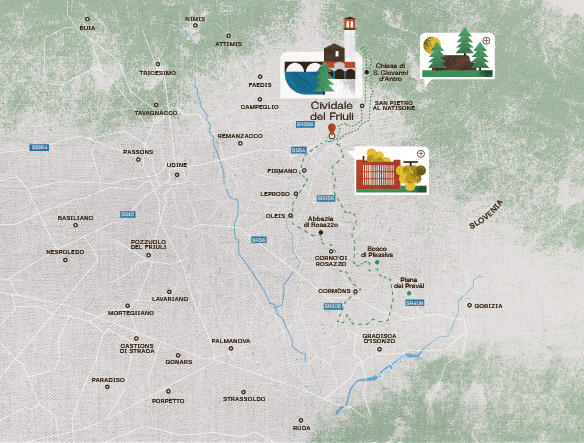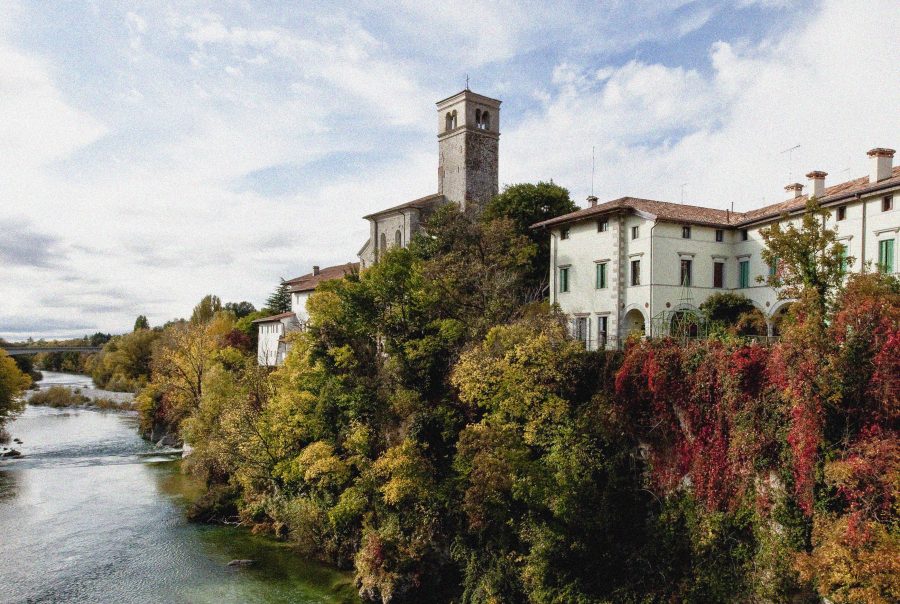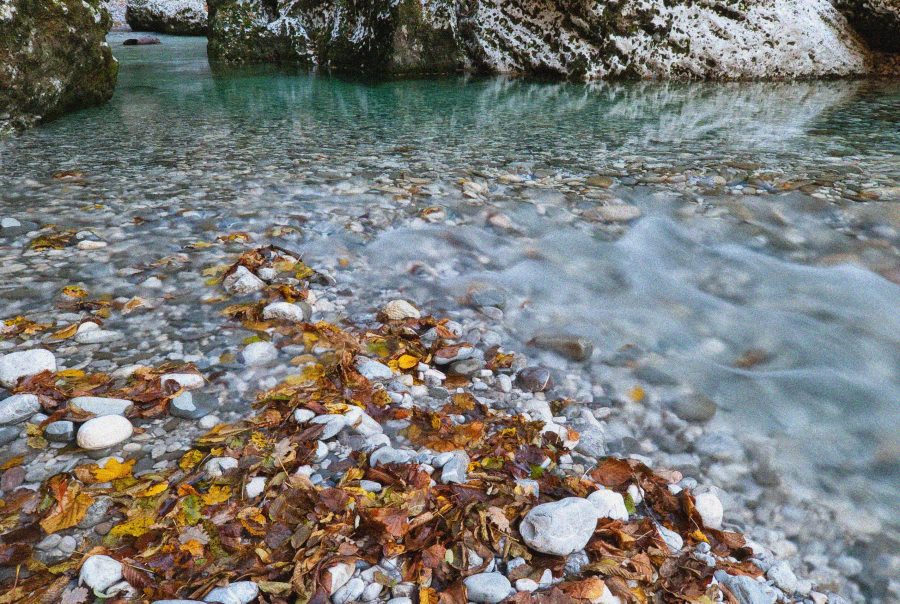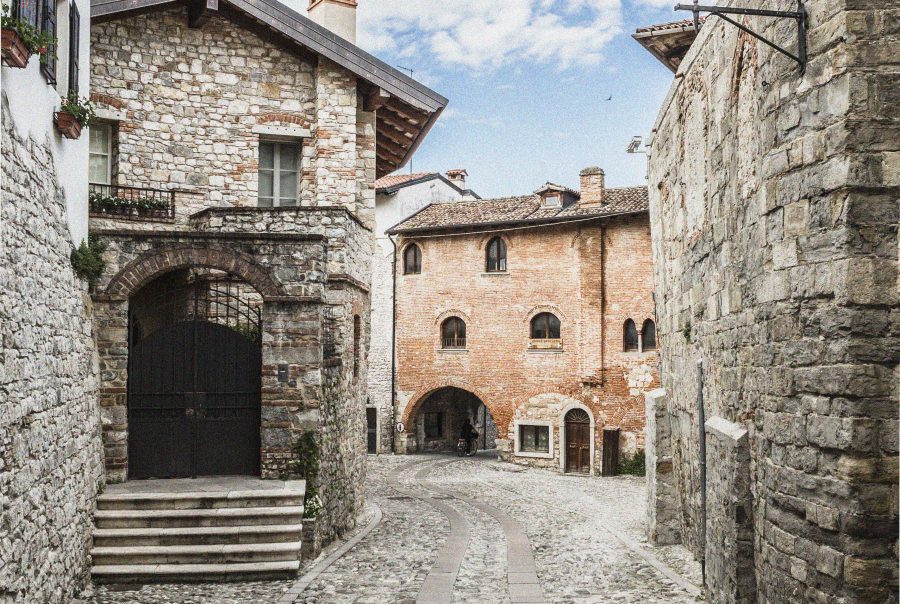Cycling through forests and hills
Luckily if you aren’t completely tired out by the Longobard beauties that Cividale has to offer, don’t worry because the route (or rather, the two routes proposed, one of 70 km and another of 95, for the toughest cyclists) offers two new worlds: the wild woods of Friulian Slavia to the North, and the Region of Friuli wines and the orderly hilly landscape to the South. Cividale is the link between these two realities that touch but are bearers of those historical and linguistic diversities of which the Region is an extraordinary arena.
The departure is from the scenic Piazza Paolo Diacono, which after a short ride reaches the clear, cool colours of a geographical gem: the Natisone river called Nediža in the local Slovenian language. It draws the area of the four Natisone Valleys like a blue and turquoise backbone with other creeks forming the ribs. The valleys are dotted with silent and sparsely inhabited villages, ancient often frescoed churches (forty-four!) and dense woods of chestnut trees, oaks, maples and lindens which survived the chronic hunger for timber of the Serenissima Republic of Venice. The valleys of course, are well known by strong-legged Friuli cyclists. There is little traffic, good air, unique views and, sometimes, heart-pounding slopes. And then the cold waters of the creeks where the bravest, or the most overheated cyclists, cool off without even taking off their biker shorts.
If you are not satisfied with the proposed itinerary, which is quite easy – apart from a few stages- you can explore these unique, tranquil places completely absent of traffic for an unforgettable experience, but you will have to stay a few days longer. The cycle path, which follows the right side of the river, passes over Ponte San Quirino, from where another tortuous gorge of the Nediža starts, carved by the river over thousands of years with wild wisdom reaching San Pietro al Natisone. In the Valleys, a variant of Slovenian is spoken and all the names of the towns are double: in Slovenian – original names – and Italian. Just outside Cividale, where the Friuli language reigns, the Slavic world begins, ending in Vladivostok, facing the Sea of Japan. According to Google Earth there are eleven thousand kilometres of Slavia: It is thrilling. Apart from the tranquillity of the landscape, there are many things to visit: the quiet cemetery of Guspergo, a few minutes from Sanguarzo. It is completely silent, with tombstones emerging from a sea of grass; or the slab of Biacis, a stone engraved in the protohistoric period and then reused as a lithic table for the meetings of the local court; or the church of San Giovanni d’Antro, built in a cave. Unfortunately to reach it there is a challenging one-kilometre uphill detour. But just the ride to Specognis, to be precise to Podsvarchis, is worth the slight effort. Can you hear the charm of the names? After crossing the bridge over the river, the road leads back to Cividale, offering a view of the Natisone river from the other bank. Both on the way there and back, you will often glimpse its crystal-clear course, with a fascinating view from above.
Two worlds that are linked like the faces of a coin but rich in magical diversity, in distances that touch. On one side, Slovenian, on the other Friulian, there the woods, here the vineyards. The narrow, often unpaved streets that lead to Cormòns, are steeped more in beautiful landscape than historical excellence: you can cycle through vineyards at the foot of the hills to come across ancient farmhouses. Some climbs await you, such as the modest pass that will then take you downhill to Craoretto, or the ascent of the Plessiva forest, all along dirt tracks through the woods. The Piana del Prevàl is a tangle of roads and cycle paths, and if you want to meander, all you have to do is abandon the GPS track: Cormòns is just a stone’s throw away. You can shorten the tour, but I will accompany you to the destination by taking you through the avenue of centuries-old cypresses, truly unique and ignored by most Friuli inhabitants, a local Bolgheri (hamlet in Tuscany) that from Monticello reaches the entrance to the town.
Cormòns has Habsburg Friuli in its DNA. The bronze statue opposite the church of Santa Caterina (or Rosa Mistica), which is a treasure chest of relics and miracles for believers, belongs neither to Vittorio Emanuele nor Garibaldi. The elegant bronze man is Maximilian I of Habsburg, grateful to the town for its loyalty to the Empire and its wines, which the emperor always expected on his table. To help you understand, it is as if the statue of Cavour was to be found in a square in Klagenfurt. Trattorias and taverns, a well-stocked wine shop and a cluster of alleys flanked by ancient houses are the heart of this excellent wine centre. If little oenological sins have made your legs wobbly, you can opt for a direct route: 18 km of plain up to Cividale – you cannot get lost – or follow our route, which is a punishing climb to the abbey of Rosazzo with a short but, I guarantee, intense stretch. The abbey dates back to the year 1000. It houses frescoes of the Venetian-Giorgionesque school, and the hilly path offers a bird‘s eye view of the plain. On the return journey, you will touch the villages of Oleis, Leproso and Firmano. The Natisone, the so-called blue river, will accompany you to Cividale. The road, at times, paved and others unpaved sometimes follows the river and, at others, moves away from it, creeping through vineyards and fields. But the surrounding Friuli mountains, snowy in winter and blue in the summer, will always be a pleasure for your eyes: just one of the charms of this region multifaceted like a diamond. And returning to Cividale, do not miss a last gaze of the river, sit on your bicycle, lean on the stones of the Devil’s Bridge. Are you tired? Sometimes exhaustion is a reward.








